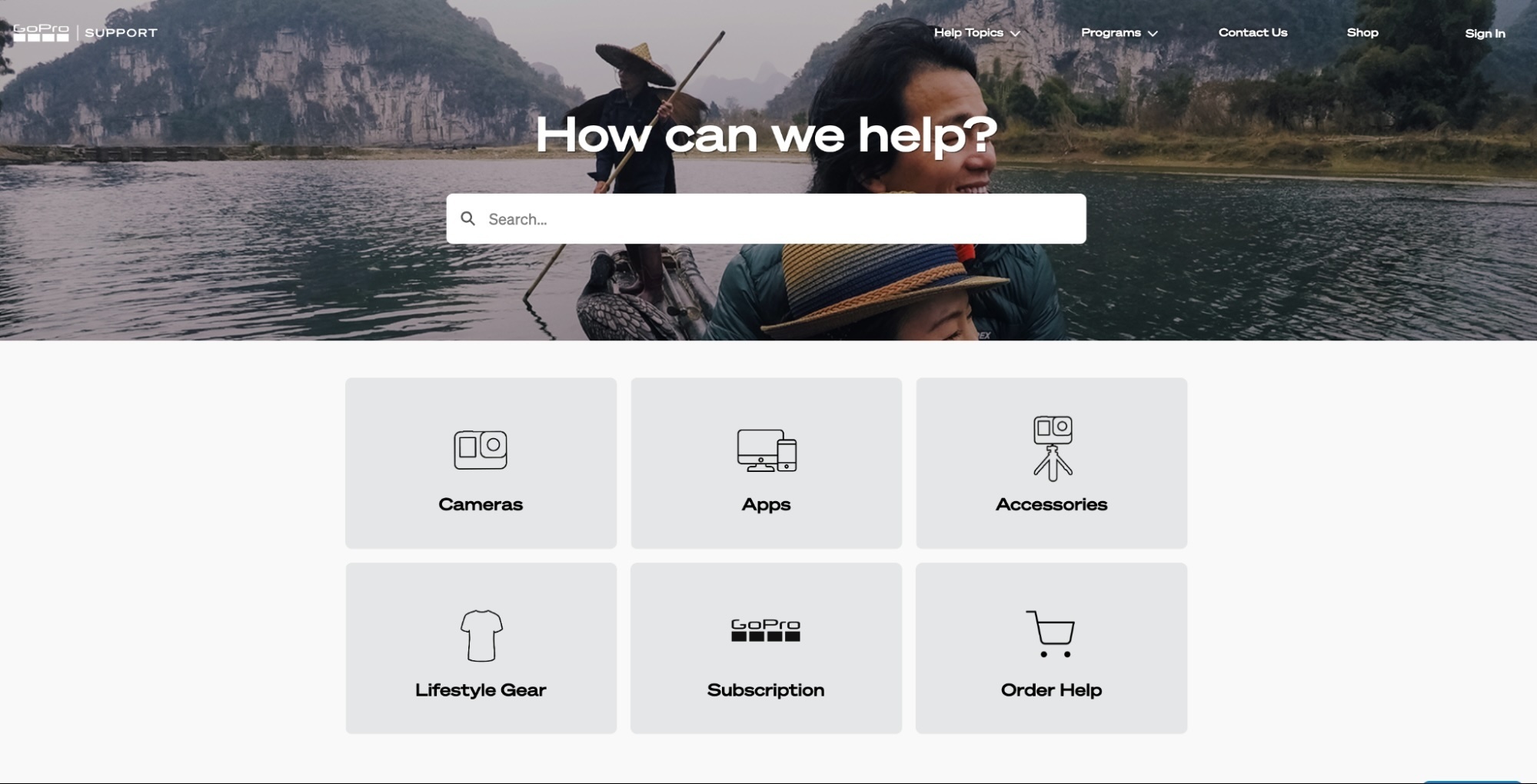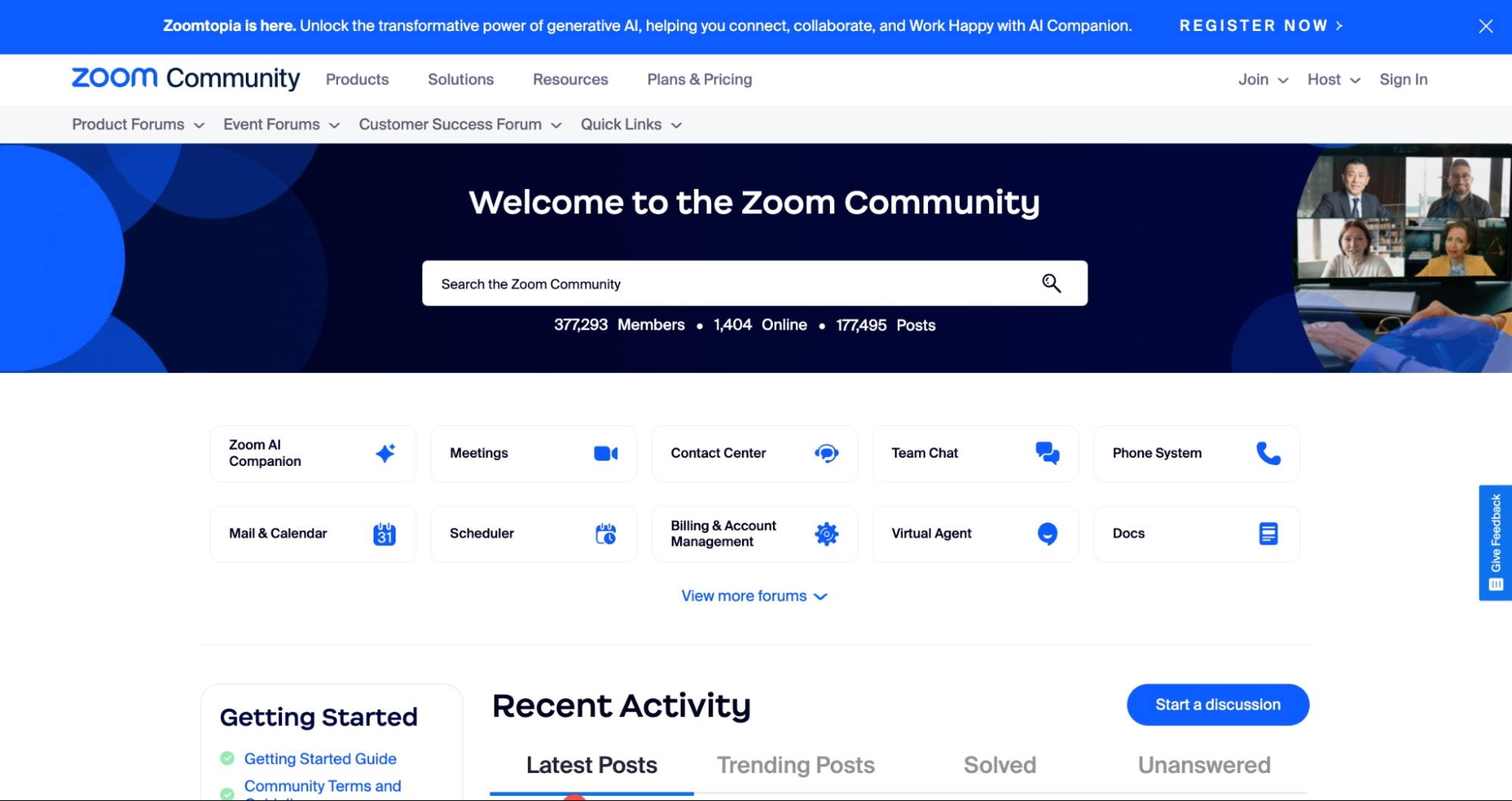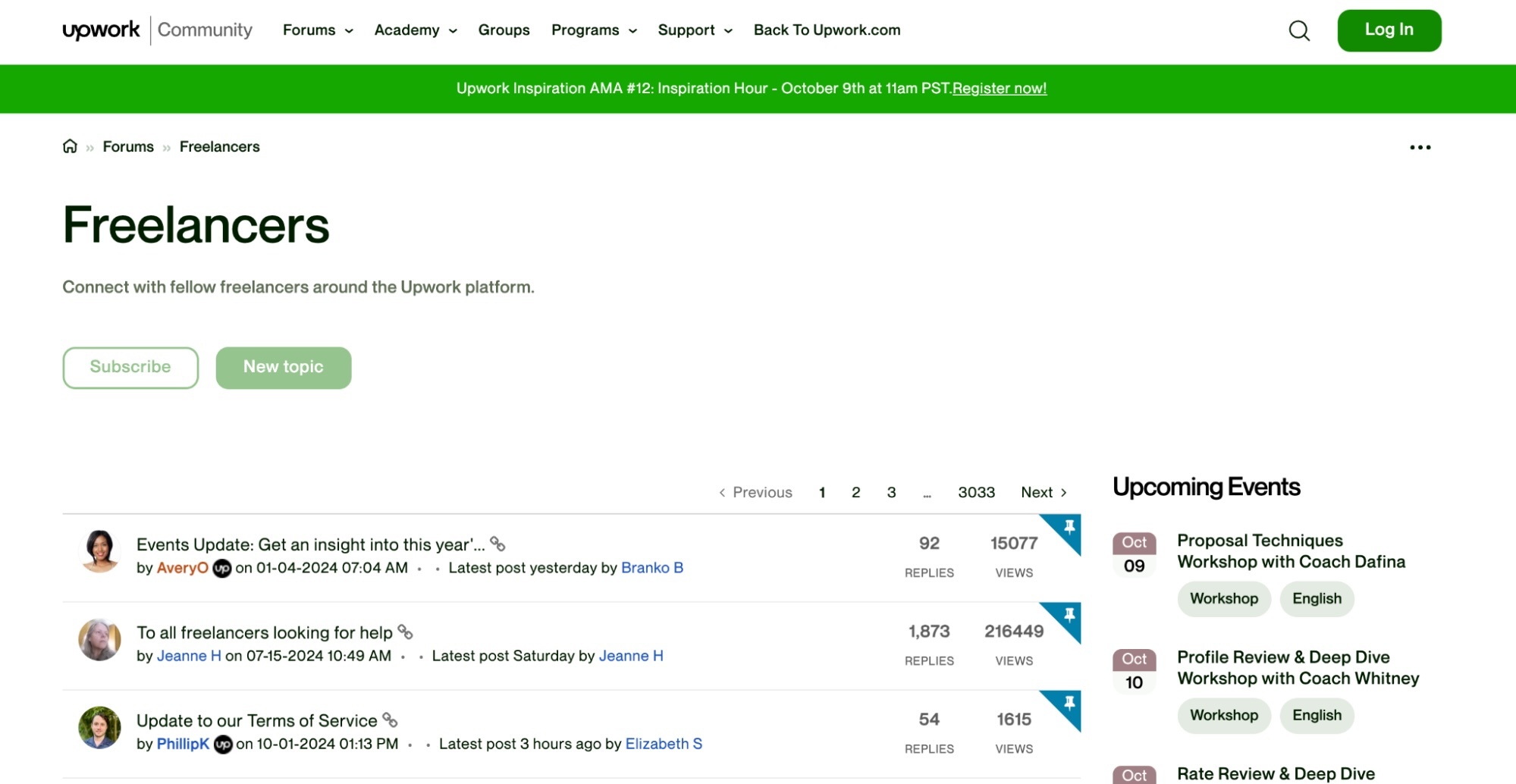EXPERT INSIGHTS
Nov-12-2024
11 great brand community examples for 2024
Khoros Staff
11 great brand community examples for 2024 (Plus how to build one)
Your brand needs more than just awareness. It needs a community of people rallying around it and sharing the benefits of your products or services with their friends and families. And here's the good news: you don't have to start from scratch or reinvent the wheel. Instead, you can learn from a variety of established brand communities out there and take inspiration from their success stories.
In this article, we'll delve into the world of brand communities, exploring what they are and why they matter. We'll share practical insights on how to build a vibrant and loyal community around your brand, explore some examples of brand communities, and draw inspiration from real-life businesses that have harnessed the power of community to propel their brands to new heights.
Whether you're a seasoned marketer or just beginning your journey, this guide will provide valuable strategies to start building a strong brand community of your own.
What is a brand community, and why is it important?
A brand community is a group of your most engaged customers. While these communities can exist both online and in person, they consist of loyal customers sharing their love for your brand, engaging with your brand’s content, and, of course, buying your products or services.
Members of your brand community come together because they find your brand's values or products align with their own preferences and lifestyles. These communities represent a space where individuals can express themselves, connect with like-minded people, and reinforce their self-identity through their association with the brand.
But a brand community doesn’t happen overnight, and it’s not formed just because one person makes a purchase. In fact, your brand community likely already exists online as people organically post about your products or services. You can tap into what’s already there to make it a powerful tool for your business. That’s because brand communities thrive on two-way communication, and engaging with your base in the form of seeking input, feedback, or ideas helps strengthen your relationship and build trust.
Customers who feel a sense of belonging with and through your brand will make repeat purchases and become unofficial brand ambassadors to other people in their lives. Brand communities also provide valuable insights for companies to understand their customer base, prevent customer churn, and learn more about market trends. Finally, brand communities can help build resilience, particularly during crises, because digital users can answer each other’s questions and support one another, taking the burden off your customer support team.
Examples of brand communities in action
1. Apple

Perhaps one of the most recognizable brands of the 21st century, Apple has a dedicated fan base of users that often connect through online forums, social media groups, and in-person events.
The tech company has a dedicated landing page on its website for its Apple Support Communities, where users can discuss their experiences, share tips and tricks, and earn points by providing technical support to each other. This community not only enhances the user experience but also fosters a sense of belonging among members who are passionate about Apple products.
Users who rack up enough points can create their own user tips, get exclusive news about the brand, and access an exclusive members-only area to share ideas and generate new content.
In addition to Apple’s official support community, numerous unofficial Apple support groups exist all over the world, with thousands of members in each community engaging with each other, answering questions, and connecting over their shared identity as Apple users.
2. Starbucks

Another highly-recognizable brand, Starbucks fans make their presence known online and during pumpkin spice latte season, the latter being much more than just a sweet little example.
The incredible success of the pumpkin spice latte and its ability to play into many people’s favorite time of year inspired Starbucks to create its own Facebook page that celebrates fall all year long, Called “Leaf Rakers Society,” the group has more than 43,000 members who connect with each other over their shared love of Starbucks and the fall season. In addition to these types of social media groups, Starbucks has also built a thriving brand community based on its mobile app, which gives users points based on their orders to unlock special deals, rewarding loyal customers.
3. Harley-Davidson

Harley-Davidson has one of the most iconic brand communities in the motorcycle industry. Owners of Harley-Davidson motorcycles often participate in group rides, rallies, and events, creating a strong sense of camaraderie and shared passion for the brand. Many motorcyclists consider their bikes as an extension of themselves, part of their lifestyles.
With the brand’s Harley Owners Group, members get perks like access to Harley-Davidson’s lifestyle magazine, free entry to the Harley-Davidson Museum, and even an elite Visa credit card.
By embracing its customer base, Harley-Davidson has cultivated one of the strongest brand communities in existence, reaching a brand valuation of nearly $8 billion.
4. LEGO

LEGO enthusiasts, known as AFOLs (Adult Fans of LEGO), have a passionate brand community with a Reddit group of 28,000 members. They share their creative builds on platforms like Instagram and connect through fan conventions and online forums to discuss their love for LEGO bricks and sets. A quick search on TikTok for LEGO content yields a multitude of user-generated content.
LEGO also has a forum for members of its brand community to share their ideas for future LEGO products, where other members can support each other’s ideas and send them to LEGO for consideration. This collaborative platform not only fosters innovation but also strengthens the bond among fans by allowing them to actively participate in shaping the brand’s future. Additionally, LEGO frequently highlights fan creations in their official communications, further validating and celebrating the contributions of their community members, making AFOLs feel valued and connected to the brand.
5. Airbnb

Airbnb's brand community is built around the idea of sharing unique travel experiences. Hosts and guests often form connections through their shared experiences in various destinations. This sense of adventure and exploration creates a strong emotional bond with the brand.
And, because Airbnb encourages users to share their travel stories and reviews, users can connect and relate to the other 150 million users' experiences while sharing valuable information and tips.
The brand’s Community Center also provides a hub for resource sharing, local host clubs, and user-generated content. Here, hosts can find answers to common questions, offer advice, and solve problems through peer-to-peer support, reducing the need for formal customer service. By leveraging this community-driven support, Airbnb empowers its users to help each other, fostering an even stronger sense of connection and trust within the brand community.
6. Sephora

Sephora has cultivated a brand community centered around inclusivity and self-expression. The brand offers a wide range of products catering to diverse beauty needs, allowing customers to find products that resonate with their individual styles.
Sephora’s Beauty Insider community has more than six million members, including mini-groups focusing on specific elements of beauty such as skincare, hair care, lip colors, and more. These groups, in tangent with reviews and ratings for products, foster a sense of community among cosmetics enthusiasts. This commitment to creating an inclusive space empowers customers to learn from each other, seek advice, and discover new products tailored to their unique preferences.
7. GoPro

GoPro, known for its take-anywhere action cameras, has a vibrant brand community of adventure enthusiasts. GoPro not only connects with thrill-seekers’ daring lifestyles but also provides value to this group by giving them a way to capture and share their riveting experiences, inspiring more bold people like them and expanding the community.
Users share their action-packed videos and photos on social media, participate in challenges and contests, and offer feedback on product features. GoPro’s Instagram account boasts 20.5 million followers and features countless first-person videos of users exploring the world using these cameras.

To support their loyal customers, GoPro created the GoPro online brand community, providing a centralized platform for product support and assistance. Customers can easily search for solutions, specify the products they need help with, manage their subscriptions, and address order inquiries all in one place. This streamlined approach not only enhances user experience but also builds trust and loyalty among GoPro users.
8. Zoom

Zoom, a digital platform that enables seamless connection and collaboration for work, school, or personal use, boasts one of the most effective online brand communities. Its tech community functions as a robust customer self-service hub where users can ask questions, find answers, and exchange knowledge with fellow users. This online community not only fosters peer-to-peer support but also enables Zoom to scale its customer service efficiently, meeting user demands with speed and flexibility.
Within the community, users have access to a wealth of resources, such as helpful articles and tutorials on different features. Additionally, the Zoom community offers easy access to a variety of customer service channels including virtual agents, phone, chat, and more — providing a tailored support experience. This integrated approach empowers customers to resolve issues independently while ensuring they can escalate matters to human agents when needed, enhancing the overall user experience.
9. Upwork

Another great brand community example is Upwork’s branded community. With its expansive global reach, spanning millions of freelancers across 180+ countries, Upwork’s user base is often affected by events like conflicts or natural disasters. In these scenarios, users rely on timely updates and expert guidance to navigate challenges. As the world’s largest work marketplace, Upwork has positioned its community as a central hub for communication and guidance, significantly reducing the volume of crisis-related posts and support tickets.
The community’s knowledge-sharing features — including various forums for different types of users, a dedicated academy for skill development, and specialized programs — help users stay informed and adapt quickly. These resources streamline the overall experience, empowering freelancers to advance their careers and enabling businesses to efficiently connect with the right talent. This collaborative approach fosters self-reliance and reduces the need for external support, making the Upwork community an invaluable asset for its global user base.
10. NetApp

NetApp, a leading provider of intelligent data infrastructure, has developed a robust online support community for its customers. Previously, like many companies, NetApp relied on manual support processes where users submitted tickets, which diverted resources and time from addressing more critical issues. Recognizing the potential of their online community, NetApp revamped it to offer self-service capabilities. This allowed users to search for solutions or request additional support, all within a single platform. The results were impressive, with NetApp reducing its cost per answer by nearly 20% and improving both its Customer Satisfaction (CSAT) and Customer Effort scores.
11. Palo Alto Networks

Cybersecurity professionals worldwide trust Palo Alto Networks for guidance on emerging best practices. In response, the threat intelligence provider has established a branded community forum designed to enhance knowledge sharing and streamline customer support. This digital platform acts as a valuable resource for over 350,000 cybersecurity experts eager to connect and bolster their security measures. As illustrated by their branded community, the forum heavily draws from content such as blogs, articles, podcasts, and various tools available to members. Users can effortlessly search for needed information and engage in collaborative discussions with peers. This initiative ensures that customers remain proactive in adapting to the ever-changing cybersecurity landscape.
How to build a brand community
Building a brand community is a strategic process that requires deliberate effort, ongoing support, and the use of effective tools and platforms.
Here are some general steps to guide you in building a thriving brand community:
Understand your audience: Conduct thorough research to understand your target audience's preferences, values, and interests. What motivates them? What problems can your brand solve for them?
Define your brand’s values: Clearly articulate your brand's values and mission. Your community should align with these core principles to foster a genuine sense of belonging.
Select the right platform: Choose the platform(s) that best suit your target audience. Whether it's social media, online forums, or a custom-built community website, select the medium that your audience is most comfortable with.
Create engaging content: Develop and share content that resonates with your community members. This could include blog posts, videos, podcasts, or interactive posts that encourage participation. Make sure these posts provide value to your audience, like exclusive insights, educational resources, or access to industry experts.
Facilitate discussion: Actively engage with your community members. Respond to comments and questions, and encourage members to interact with each other. Don’t forget to establish clear guidelines for engaging within your community, and moderate content to keep a safe and positive environment.
Reward and recognize: Recognize and reward active community members. This could involve badges, special access, or exclusive content to motivate ongoing participation.
Gather feedback: Continuously seek feedback from your community to improve your offerings and community experience.
Measure and analyze: Use analytics to track the performance of your community. Understand what's working and what needs improvement.
Building brand communities at Khoros
Building a brand community requires dedication, time, and the right tools to effectively manage and engage with your members. Khoros offers community management software to help you develop, launch, and nurture your own brand community, leveraging our expertise in community management, engagement strategies, and data analytics.
With Khoros Communities, you can create a vibrant and loyal community around your brand, driving long-term success and customer loyalty. We’re sure you'll have more questions about brand community-building, so check out our comprehensive FAQ for answers to anything we didn’t cover — from timeline implementation to measuring the success of your brand community using data.
Engage your customers like never before and turn their passion for your brand into results with Khoros. Request a demo of our community platform today.












